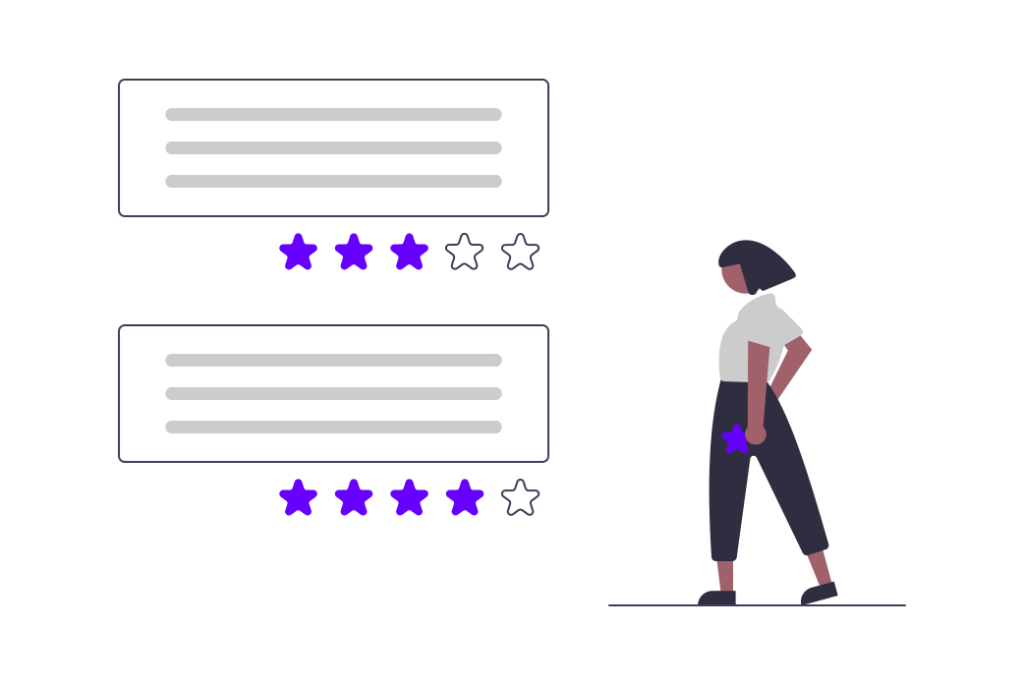Twitter is a hub of activity for your existing and potential user base. It’s no understatement that Twitter is a vital platform for your business to make connections online.
According to Hootsuite, in 2021 alone, 187 million users logged onto Twitter daily, and 82% of B2B content marketers used Twitter to organically market content.
You might feel the pressure to secure leads for your bottom line. But sometimes, it’s about doing right by the people already aware of your company and ensuring that they remain, or become, loyal supporters.

Twitter is the driving force of a staggering amount of daily online communication, where anyone can register an opinion. It’s more important than ever to keep ahead of the curve in regards to the public discourse surrounding your business.
Here are four ways to providing customer service you can take to ensure that customers on Twitter come away with a positive impression.
Read Now: Humanise Your Brand and Give it a Clear Voice
Respond directly to queries
As part of a business trying to make an impression online, it’s not enough to simply have a presence on Twitter. More important is to actively monitor for when customers are trying to reach out to you.
While responding as soon as possible is very important, it’s arguably even more important to deal with the customer in a personable manner. You should make sure you deal with customers as individuals, treating them as humans instead of statistics.
You should aim to make the whole interaction centre around the customer’s own experience. An easy first step is to use the customer’s display name – distinguishable from their @ handle.
If, for example, a potential customer has a more general question, answer that question with as much specificity as possible to that person’s case. You can achieve this by asking questions of your own about their situation.

If an existing customer makes contact about a negative experience, standard resolution techniques apply. Apologise, and set up a resolution both parties are happy with.
On Twitter specifically, it’s useful to make this opening in a public reply. This way, the unhappy customer’s followers can see that you are actively making a direct attempt to engage with customers’ individual problems. As can anyone searching for mentions of your business in Twitter’s search tool.
Depending on the popularity of your company, you might be dealing with lots of individuals’ similar queries throughout the day. Ward off the impression that you are taking a rote, impersonal approach to customer service by signing the end of your tweets to the customer with your first name, or initials.
Read Now: How to Resolve Complaints on Social Media
Reach out to people talking about your business, even if they don’t explicitly @ you
Customers you should be listening to may not always ‘@’ you directly. This is usually an indicator that the customer is more riled up than usual. They might be using their tweet to rant, instead of making a sincere request for a customer service representative to solve their problem.
Regardless, you should be searching for these kinds of customers on Twitter using the search bar. Make the initial outreach described above to see what can be done. Efforts to make reparations are always worthwhile.
An advanced step might be to search for common misspellings of your business’ name, or attempts to censor it (such as with asterisks) in Twitter’s search bar.

Attempt to defuse difficult customers, no matter what
It’s no secret that human beings can be more confrontational and even abusive on social media compared to real life. And it’s perfectly acceptable that your business may not be the best fit to ask every customer you approach like this if they would prefer a face-to-face consultation.
Staying calm and trying your best to resolve problems from your Twitter account can turn active detractors of your business into potential repeat customers. It can even result in wider positive public relations for your business, if the customer later tweets about how you unexpectedly reached out to make things right.
It’s easy to be intimidated by words on a screen, but always useful to remember that a person wrote them. People, not words, buy your products or services. You should be leveraging Twitter, a social media app still relatively new to inbound marketers, to let them know you value them.

Take it private
Whether you’re trying to give a lead the information needed to make a buying decision, or dealing with a negative customer experience, invite them to send you a direct message in your introductory tweet.
Otherwise, you may inadvertently clog up your own feed with individual customer problems, or risk exposing a customer’s personal information.
Remember, anyone who clicks the ‘tweets with replies’ button on your profile can see all of the tweets you have sent to other accounts, and all of the tweets they have sent to you. This can be a blessing and a curse.
Customers may not always take you up on this offer, but it’s important to make the effort.
Read Now: How to Use Twitter to Promote Your Business
Conclusion
Beyond the mass-promotion efforts of a single tweet, Twitter is effective at communicating with customers on an individual level. Even from an anonymous brand account, personal connections with customers can be made and strengthened.
The goal of leveraging social media as a business is to positively raise your profile and reputation. These strategies are an easy way for you to get started. They make a public record of your efforts, and may even lead to some positive mentions of your business afterwards.
In the digital age, customers are gravitating to short-form communication in all areas of their lives. Knowing how to adapt your customer service technique for Twitter is vital for your business to stay relevant.
Great communication on Twitter is vital for small businesses. To know what you can do to improve in this area, contact us at Floodmaker.